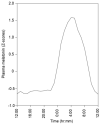Homo sapiens May Incorporate Daily Acute Cycles of "Conditioning-Deconditioning" to Maintain Musculoskeletal Integrity: Need to Integrate with Biological Clocks and Circadian Rhythm Mediators
- PMID: 36077345
- PMCID: PMC9456265
- DOI: 10.3390/ijms23179949
Homo sapiens May Incorporate Daily Acute Cycles of "Conditioning-Deconditioning" to Maintain Musculoskeletal Integrity: Need to Integrate with Biological Clocks and Circadian Rhythm Mediators
Abstract
Human evolution required adaptation to the boundary conditions of Earth, including 1 g gravity. The bipedal mobility of Homo sapiens in that gravitational field causes ground reaction force (GRF) loading of their lower extremities, influencing the integrity of the tissues of those extremities. However, humans usually experience such loading during the day and then a period of relative unloading at night. Many studies have indicated that loading of tissues and cells of the musculoskeletal (MSK) system can inhibit their responses to biological mediators such as cytokines and growth factors. Such findings raise the possibility that humans use such cycles of acute conditioning and deconditioning of the cells and tissues of the MSK system to elaborate critical mediators and responsiveness in parallel with these cycles, particularly involving GRF loading. However, humans also experience circadian rhythms with the levels of a number of mediators influenced by day/night cycles, as well as various levels of biological clocks. Thus, if responsiveness to MSK-generated mediators also occurs during the unloaded part of the daily cycle, that response must be integrated with circadian variations as well. Furthermore, it is also possible that responsiveness to circadian rhythm mediators may be regulated by MSK tissue loading. This review will examine evidence for the above scenario and postulate how interactions could be both regulated and studied, and how extension of the acute cycles biased towards deconditioning could lead to loss of tissue integrity.
Keywords: acute conditioning; acute deconditioning; circadian rhythms; connective tissue homeostasis; ground reaction forces; myokines; osteokines.
Conflict of interest statement
The authors declare they have no conflict of interest to disclose.
Figures



Similar articles
-
On the adaptive significance of circadian clocks for their owners.Chronobiol Int. 2013 May;30(4):413-33. doi: 10.3109/07420528.2012.754457. Epub 2013 Mar 4. Chronobiol Int. 2013. PMID: 23452153 Review.
-
Exercise entrainment of musculoskeletal connective tissue clocks.Am J Physiol Cell Physiol. 2024 Aug 1;327(2):C270-C277. doi: 10.1152/ajpcell.00285.2024. Epub 2024 Jun 17. Am J Physiol Cell Physiol. 2024. PMID: 38881419 Review.
-
The diurnal tick-tockery of platelet biology.Platelets. 2012;23(2):157-60. doi: 10.3109/09537104.2011.600791. Epub 2011 Aug 2. Platelets. 2012. PMID: 21806497
-
Contributions of white and brown adipose tissues to the circadian regulation of energy metabolism.Endocrinology. 2021 Mar 1;162(3):bqab009. doi: 10.1210/endocr/bqab009. Endocrinology. 2021. PMID: 33453099 Free PMC article. Review.
-
Clocks in the clinic: circadian rhythms in health and disease.Postgrad Med J. 2018 Nov;94(1117):653-658. doi: 10.1136/postgradmedj-2018-135719. Epub 2018 Dec 6. Postgrad Med J. 2018. PMID: 30523071 Review.
Cited by
-
Homo sapiens-A Species Not Designed for Space Flight: Health Risks in Low Earth Orbit and Beyond, Including Potential Risks When Traveling beyond the Geomagnetic Field of Earth.Life (Basel). 2023 Mar 10;13(3):757. doi: 10.3390/life13030757. Life (Basel). 2023. PMID: 36983912 Free PMC article. Review.
-
Regulation of Bone by Mechanical Loading, Sex Hormones, and Nerves: Integration of Such Regulatory Complexity and Implications for Bone Loss during Space Flight and Post-Menopausal Osteoporosis.Biomolecules. 2023 Jul 15;13(7):1136. doi: 10.3390/biom13071136. Biomolecules. 2023. PMID: 37509172 Free PMC article. Review.
-
Editorial: Optimal physical activity across the lifespan for people of all abilities.Front Sports Act Living. 2025 Jun 26;7:1645447. doi: 10.3389/fspor.2025.1645447. eCollection 2025. Front Sports Act Living. 2025. PMID: 40642655 Free PMC article. No abstract available.
-
Rethinking Osteoarthritis Management: Synergistic Effects of Chronoexercise, Circadian Rhythm, and Chondroprotective Agents.Biomedicines. 2025 Mar 1;13(3):598. doi: 10.3390/biomedicines13030598. Biomedicines. 2025. PMID: 40149577 Free PMC article.
-
Optimizing tendon repair and regeneration: how does the in vivo environment shape outcomes following rupture of a tendon such as the Achilles tendon?Front Bioeng Biotechnol. 2024 Feb 16;12:1357871. doi: 10.3389/fbioe.2024.1357871. eCollection 2024. Front Bioeng Biotechnol. 2024. PMID: 38433820 Free PMC article. Review.
References
-
- Basti A., Yalcin M., Herms D., Hesse J., Aboumanify O., Li Y., Aretz Z., Garmshausen J., El-Athman R., Hastermann M., et al. Diurnal variations in the expression of core-clock genes correlate with resting muscle properties and predict fluctuations in exercise performance across the day. BMJ Open Sport Exerc. Med. 2021;7:e000876. doi: 10.1136/bmjsem-2020-000876. - DOI - PMC - PubMed
-
- Dijk D.J., Shanahan T.L., Duffy J.F., Ronda J.M., Czeisler C.A. Variation of electroencephalographic activity during non-rapid eye movement and rapid eye movement sleep with phase of circadian melatonin rhythm in humans. J. Physiol. 1997;505:851–858. doi: 10.1111/j.1469-7793.1997.851ba.x. - DOI - PMC - PubMed
Publication types
MeSH terms
Substances
LinkOut - more resources
Full Text Sources

